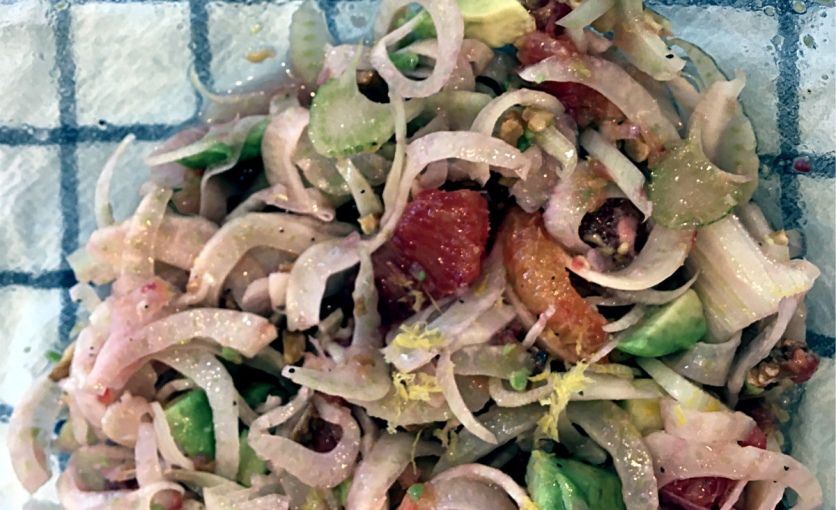
Is your mid-winter salad game in need of a boost? The “winter vegetable blues” are a real thing for us at The Sylvia Center. How do we know when we’re suffering from the WVB? 1. When what was once exciting in the fall (roasted root vegetables! kale apple carrot salad! cabbage soup!) now makes us groan. 2. When our bodies are feeling heavy and slow. 3. When the wait for fresh spring vegetables seems almost unbearable.
This trifecta of feelings indicate it’s time for this fennel citrus salad. Bright, light, and refreshing, it’s just the cure we need when we feel the blues coming on. Each bite of crunchy fennel, juicy citrus, and creamy avocado reminds us that there’s lots this time of year has to offer. And, just like that, we’re excited about squash again.
Fennel Citrus Avocado Salad
Adapted from Smitten Kitchen
Serves: 4
Ingredients
¼ cup pumpkin or sunflower seeds
1 medium-large fennel bulb, leaves and stems trimmed off
Salt and pepper, to taste
Juice and zest of 1 lemon
2 large blood oranges
1 grapefruit or 2 navel oranges
1 ripe avocado, diced
1 small shallot, peeled and minced
10 mint leaves, chopped
2 tbsp extra-virgin olive oil
1 tbsp honey
Optional: Fennel fronds, roughly chopped
Instructions
1. In a medium, dry saute pan, toast the seeds until lightly browned and fragrant. Set aside.
2. Slice the bottom ½ inch of fennel off and discard. Thinly slice the fennel with a very sharp knife or mandoline.
3. Toss fennel with lemon juice, salt and pepper.
4. Segment the citrus with a paring knife. Do this over a bowl to catch the excess juice, but set the citrus segments aside*. Squeeze out the remaining juice from the membrane into the bowl.
5. Add shallot, mint leaves, honey and lemon zest. Drizzle in the oil to create an emulsion.
6. Toss dressing with fennel. Top with citrus segments, avocado, and toasted seeds and fronds (if using). Give it a few gentle stirs before serving.
*When segmenting citrus, the goal is to free the fruit from the membrane. Using a paring knife, start by cutting off the top and bottom to expose a round of bare fruit. Place it on one cut end. Using the roundness of the fruit as your guide, use short, sawing cuts to slice off the rind, pith, and membrane. You should see bare fruit, and aim to remove as much as possible without wasting too much. Once you’ve made it all the way around, go back again to trim any little sections you missed. To remove a segment, slice next to side of a segment, as close to the membrane as possible. A sharp or serrated knife will help with this part. This leaves you with individual segments removed from the membrane.


